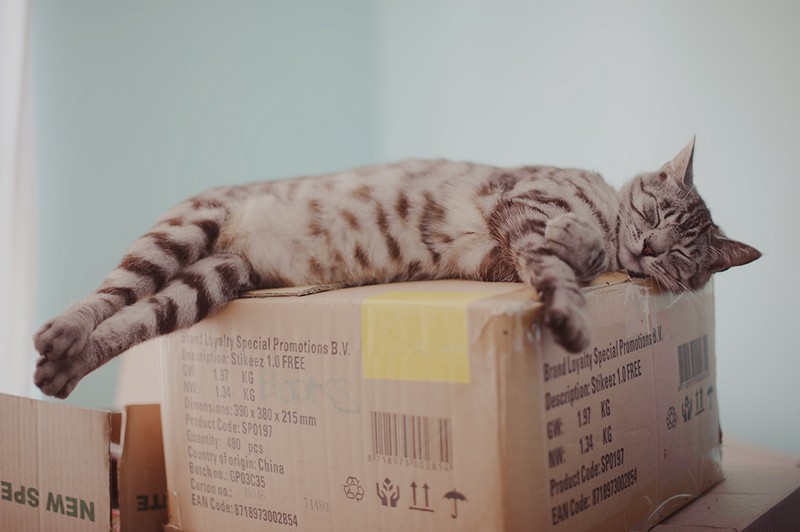Planning on moving to Ireland with your pets? I’ll share a bit about how we managed to bring over our 3 cats with us. Our lovely, and naughty, kitties are rescues. Apart from the fact that we love them very much, I felt like they were our permanent responsibility. When we adopted them we said we would take care of them forever. In some ways it’s easy to drop a pet off at a shelter, absolve or transfer responsibility, but it doesn’t seem like the right thing to do. I can agree that each case is different and sometimes people can’t afford to keep their animals for whatever reason (pet food and vet visits are way more expensive in Ireland than South Africa, for example).
How to prepare to bring your pets to Ireland
Quarantine is not necessary if you follow these steps. If you don’t, there is only one cattery in Ireland for the purpose of quarantine and you will need to book space months in advance. The cats might need to stay there for 6 months. The boarding and obligatory vet fees are quite pricey. Usually if you are bringing cats or dogs over from South Africa or another high risk country outside of the EU (any country not on this list) and want to avoid quarantine, you will have to do things in the following order.
1. Microchip
Not just any microchip will do. If your pet is already chipped, you will need to ensure that the chip number is 15 digits long and readable by a device compatible with ISO standard 11785. What this means is that the chip must be readable by the devices in the EU. If you don’t have the right chip, the pet will have to be re-chipped. GetMeKnown and BackHome chips should be good enough (not Identipet), but your vet will need to verify that you have the right chip.
It’s very important that the microchip form has the right description and information about the animals (for example, my vet in South Africa mentioned a few cases where it was complicated with dog breeds. For example, if the dog is a collie x lab, it should always be called a collie x lab and not just a “collie” or a “lab” or something else. Apparently the immigration authorities can be very particular, but we didn’t have any problems and everyone was very kind and friendly to us in Dublin. However, I think it’s best to be as organised and prepared as possible to avoid any possible complications.
2. Vaccinate for Rabies
It’s very important to do the rabies vaccination after the microchip, in this order. If they were already vaccinated but didn’t have the right chip, your vet will advise you about when it’s safe to re-vaccinate. South Africa is one of the “high risk” countries for rabies, so it has to be done.
3. Get a Blood Test
Once thirty days have passed after the rabies vaccination or rabies booster was given, then blood can be drawn from your pet/s for a titration test. This means that your vet will have to keep the pet in hospital for about half a day because he will probably sedate them in order to get a vial of blood, drawn from their necks. Your pet might come home a little bit drugged up and with a shaved patch on the neck. The results are then sent to a lab in Onderstepoort (possibly the only one that does these tests in South Africa) by your vet. The blood will be tested to see if your cat or dog has enough antibodies in response to the vaccination. They most likely will pass the test, unless advised differently by your vet.
4. Wait Three Months
Something important to remember about this step is that once the blood has been drawn, your pet cannot travel until 3 months from that date have passed. Once 3 months have passed, your pets are allowed to travel.
If you have done these first steps and the vaccinations up to date, you can travel with your pets at any time if the following steps are done without a break in vaccinations.
5. Animal Transport Services
I would definitely recommend that at this stage, or even before the whole process is underway, you consider getting in contact with a service that sends pets overseas. We used Animal Travel as they were recommended to us by friends that moved to the U.K. previously. AnimalTravel was really helpful. They arranged for the cats to be kept at a cattery until we were ready to fetch them from Dublin airport. The company also advised us on the costs of all the details, for example the purchase of the required cat cages for long distance travel.
6. Certification
The EU Health Certificate can be completed by your vet (or via the pet travel service if you are out of the country already). As far as I know each pet needs a form filled out certifying that it doesn’t have rabies and these forms are only valid for ten days. This means that the forms need to be filled out just before the pets travel. The second form, a Veterinary Certificate confirms that the pet is healthy enough to travel. You will also need to have mentioned that the pet is not being imported for commercial use.
7. Ticks & Worms
For dogs, you might need to provide evidence that they were treated for ticks and tapeworms between 24 and 48 hours before departure. The same may be true for cats. An company such as Animal Travel will organise this on your behalf.

8. Consider a cattery
Before bringing over the cats, we needed to find a pet-friendly place to live in Ireland (which is quite tricky by the way!). So it was really helpful that there was a cattery at the Animal Travel offices where our cats could stay while we found a house to rent in Ireland. It also created less complications because the cats were already at the right place that they would be taken to the airport from. The cost was about R80 per cat per day. Rates for dogs may be different.
Animal Travel Service might have done tick, worm and flea treatment, and or washed the cats. We’re not sure about what was done but they arrived very happy and clean.
9. The Flight
I would have liked to know how the pets fly: Do they have a special compartment in the hold? Are they in the dark? Is it noisy? Do cats and dogs fly together? I don’t know the answer to these questions but I do know that they had to have specially approved cages that were big enough to allow some movement (this was added onto the transport costs) and had enough space for them to look about if they wanted to. There was also shredded newspaper in the bottom of the cage and a food and water bowl that I assume was topped up during the flight (our cats flew from Cape Town to Heathrow to Dublin).
Animal Travel Services booked the flight for us, as they know all the rules. For example, only certain airlines are approved for transporting animals.
1o. The Landing
Imported animals enter Ireland via Dublin only and there is a warehouse at the airport where a company called World Freight Services hands over your pets once they’ve passed through all the checks. There is a handling cost of about €35 that you should pay on arrival.
The pets will be brought to you in their cages and then you’re free to go!
Finding a Pet-Friendly Home
It’s really tough to find pet-friendly rental accommodation. As a result, we ended up renting a way-too-big house outside of Cork (and it was quite expensive too!). One of the reasons is because most of the homes come fully furnished (pets might ruin the furniture) and are let out through agents. It’s probably less work for them to rent places out to people without pets for maintenance reasons. Some rental agents will not allow you to even view a property if they hear that you have pets. Would I recommend bringing your pets to Ireland? Honestly, as much as I love them and it’s great to have them around, I’m not actually sure if it’s a good idea practically. However, it can be done!
Taking Your Pets Home
We were driving a sedan at the time and we had to fit one of the cat cages into the boot. The cages were bigger than we were told and we could only fit 2 on the back seats. Everything was alright though as the journey wasn’t too long.
If you have cats, they might want to slowly start getting used to their new environment, so remember to keep them indoors for at least two weeks so that they’re clear about where home is. You’ll need cat litter tray liners, cat litter (once you’ve used the crystal kind, you can never go back to the stoney kind), a litter box, treats, food and bowls for food and water. If they are outdoor cats, they might get annoyed and naughty (they will probably be stressed anyway) so a scratch post and some toys are really important. Other things that would be useful are new collar tags with your new contact numbers and address (just in case of an escape).
Cats are less popular than dogs in Ireland. If you go to a supermarket, you’re not easily going to find all of those things in one go. I recommend finding out where your nearest MaxiZoo is and getting everything you need for your cats from there rather.
Important Papers
These are the things that you will probably have to hand over to the animal transport service that you choose to use.
1. Pet passport: Your pets should have something like a “pet passport” which is like a vaccination card. In it will be all the vaccinations received, microchip numbers and details about the animals. For example, the rabies vaccination mentioned above should be in there.
2. Microchip form/s: If your pet has more than one microchip, you will need both original forms. You might also need a letter from the vet saying that the pet has two chips, just in case they happen to read the incorrect one and then think it doesn’t work or something.
3. Original blood test certificate: This is the certificate with results from the blood tests.
4. EU certificate
5. Veterinary Certificate
Other documents that must travel with your pets are the two certificates: EU Health and Veterinary. These are often arranged by the service you use. There might even be other documents here that I don’t know about (tickets etc.).
You can read more about the official process at the Department of Agriculture of Ireland as the rules might change occasionally.
I hope this helps you to find the answers you need and to plan for brining your pets overseas with you. The rules might be similar for many countries, so this could serve as a research starting point even if you’re moving to another country. Either way, please know that I am not a legal expert. I can only share personal experience and can’t be held responsible for any misinformation or mishaps.

